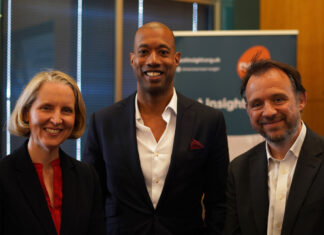Encouraging retirement saving has been rich territory for applying behavioural approaches to public policy.
Most research and policy interventions around retirement have focused on encouraging people to start saving or to contribute more. Encouraging those initially inclined to opt out to instead give saving a try has been a much lesser area of focus. The idea behind our latest piece of research, Opting out of opting out (PDF), is to utilise some of the methods that have worked in helping people to start saving to instead help them not to stop.
The ability to opt out is an important safety valve in the auto enrolment policy – to ensure that those who can’t or don’t want to save are not forced to do so. Indeed, we know many people face other competing financial challenges – a topic we’re exploring elsewhere in our research programme. At the same time, we know many people who fail to save later regret it. So, we wanted to look at how the opt-out journey is structured and explore ways to get people to ‘pause for thought’, without adding friction or guilting them into contributing. This idea has been built into the opt-out process at Nest since it was first launched. Our research aims to test variations of this original journey to identify the messages that are the most effective in encouraging this pause.
Initially during the roll-out, and then increasingly with each contribution rise, there has been a general concern that significant numbers might opt out. That of course hasn’t been the case. The roll-out of auto enrolment has been a huge success, with over 10 million workers now enrolled and opt-out levels remaining low. Between April and June 2018, the percentage of newly enrolled people who actively sought to leave their pension scheme was less than 6%. That’s a very low percentage, but the sheer size of the population we’re looking at means if we can improve upon that we can very quickly create a significant aggregate increase in retirement saving. If small tweaks, such as those tested in this trial, encourage even 1% of those opting out not to do so, that’s a few thousand more people accumulating savings for later life. So, while low opt-out rates mean there is no burning urgency in this area of the policy, we need to be mindful of these people and explore ways to encourage them to continue saving.
Conceptual design of message prompts
There has been a lot of cross industry research into message framing and its effects on intention and behaviour which has shown that people are sensitive to language. Because of this, we were able to take a wide range of theories and messaging examples from other walks of life and apply them here. Some of the theories we drew on include:
Social norming
We’ve seen social norming commonly used to encourage pro-environmental behaviours. A study by a power company in the US used social norm information to encourage participants to reduce their energy output. They did this by sending out personalised communications that compared an individual’s usage data to local averages to show them whether they were using more or less than their neighbours. The overall effect was that recipients did ‘go with the crowd’ consequently reducing their power usage.
Self-efficacy
There’s a lot of literature in psychology about self-efficacy, and the idea that a sense of control and achievability of goals is important in creating action. The challenge in retirement saving can be that the end goal might not seem within an individual’s grasp and that the actions taken to reach that goal may seem unfeasible, or unlikely to be enough to make a meaningful difference.
Just in time education
Financial education and literacy programmes have had mixed results in terms of actually shifting behaviour, rather than just intention, and the challenge remains that people tend to forget information over time. But ‘just-in-time’ financial education – giving people the information they need at the point they’re making a decision – has been shown to have a similar impact on behaviour compared to much more intensive training that’s given further in advance.
Family
Research in Mexico into how to increase voluntary saving found that one barrier to people saving for their retirement was the perception that doing so was selfish because it reduced the amount of money available for their family to spend today. Reframing encouragement to save as being for the benefit of their family in the future, rather than narrowly for the individual, proved to be an effective way to increasing take-up.
Construal level theory and psychological distance
Construal level theory is the idea that we perceive certain goals and objects as more or less ‘psychologically distant’, and this impacts the way we think about them. When thinking about things with psychological proximity, people tend to consider the details. On the other hand, more distant concepts, such as retirement, tend to be thought of at a higher ‘big picture’ level, far removed from the near-term actions that we need to take to save for it.
This has given rise to a couple of different ideas about overcoming present bias, such as getting people to think about the end goal of retirement saving, rather than the lower level act of making contributions, or by acting to reduce the distance between the saver and their ‘future self’. A great example of the latter, which was shown to reduce present bias among participants, involved showing savers an age rendered avatar of their future selves.
Testing the effectiveness of different types of messaging
For the research, 16 statements based on these theories were shown to over 500 respondents who were asked to rate the impact of each message on the likelihood that they might start or increase saving in the near future. In the second stage, the four most influential statements were shown to Nest enrolees during the online opt-out journey in a randomised trial, with Nest’s default messaging as the control.
In the first stage of the research there was a clear difference in the self-reported impact of different types of message, with ‘just-in-time’ statements showing the greatest perceived influence. However, in the second stage, only some aspects of the hierarchy from the first stage carried across to the real-world setting. On the face of it, this suggests that the messaging within the opt-out journey can influence completion rates, but further research is needed to understand which messages, or combinations of messages, might ultimately have the largest impact.
A call for further research
Online platforms are an incredible resource for trials such as these and it’s important that we conduct further research to continually improve and implement what went well. In fact, online platforms have been shown to have a significant impact on shaping financial wellbeing. Shlomo Benartzi, a renowned behavioural economist, provides some excellent examples of the potential power of digital nudges in this article.
More generally, further research will allow us to continue learning how individual opt-out journeys look, what works for different groups and potentially to explore personalising the messaging. Crucially, within that research it’s important not to ignore small gains in pursuit of big splashy ones. For a lot of people they can make a huge difference.
Will Sandbrook, Executive Director of Nest Insight







